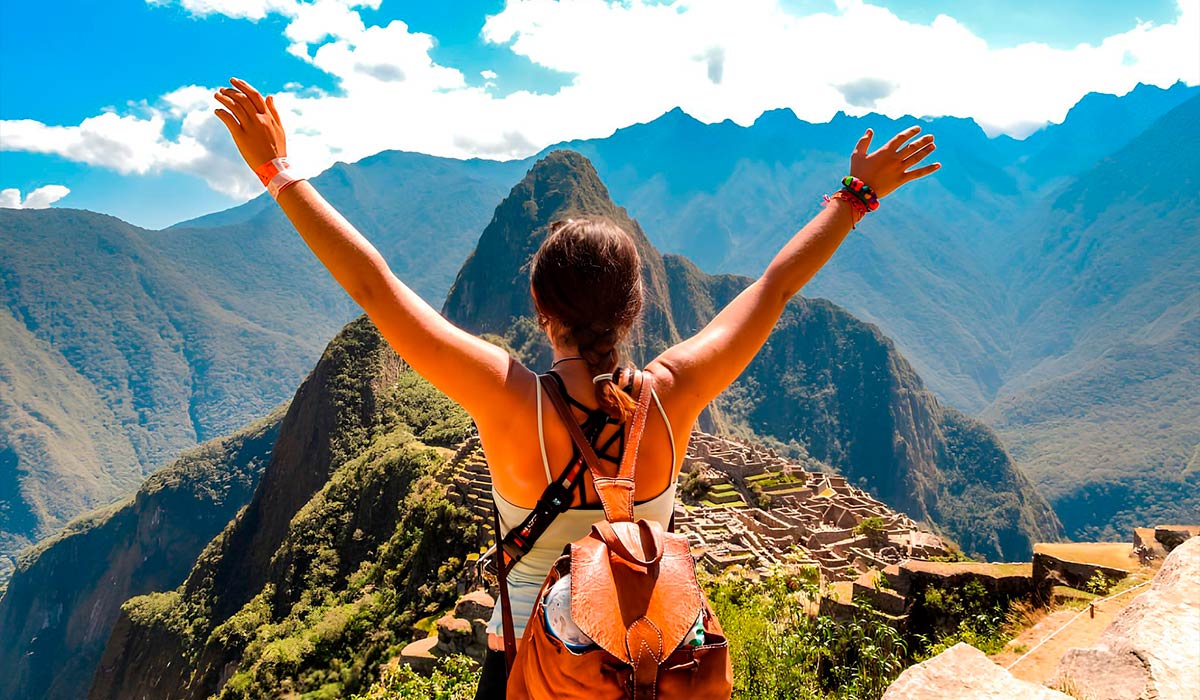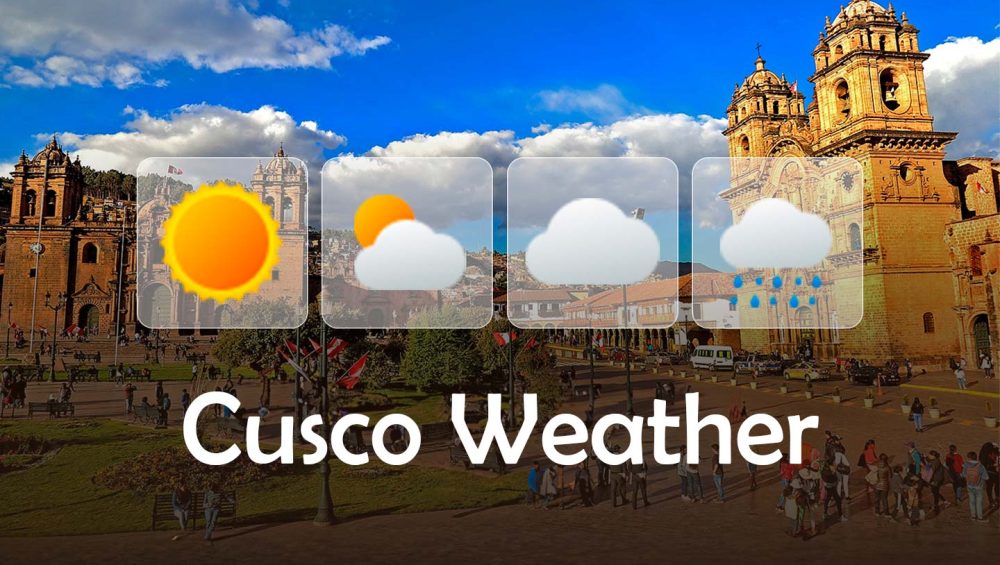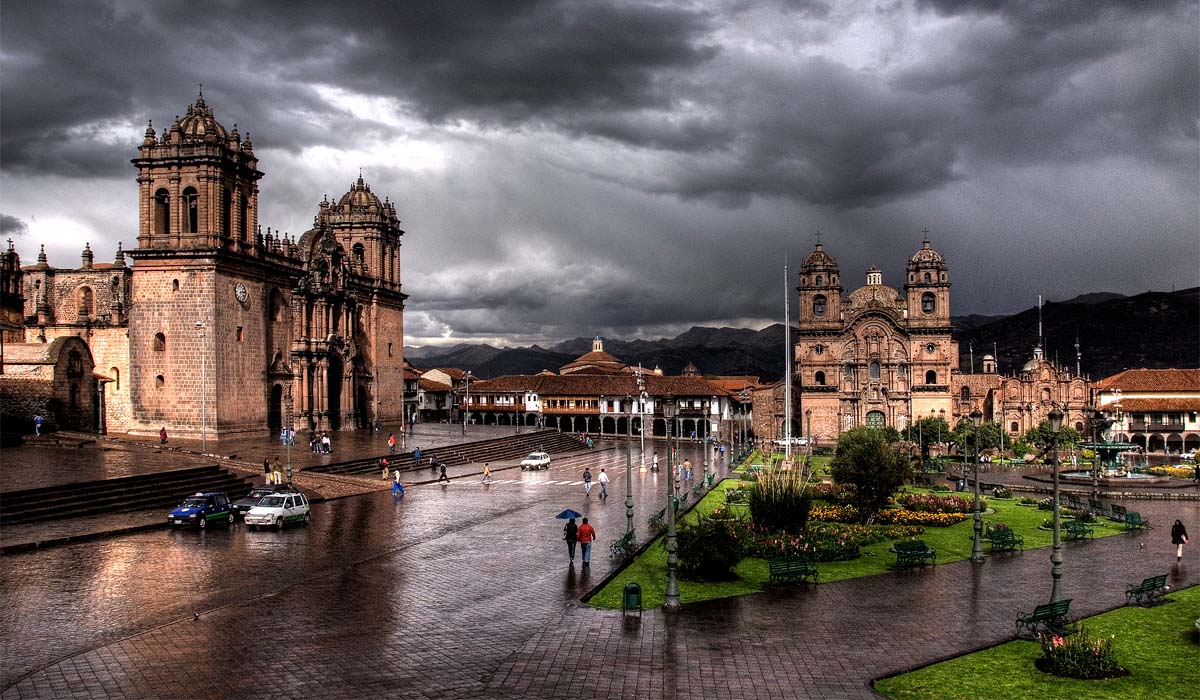Cusco Peru, the ancient capital of the Inca Empire, is the essential starting point for itineraries in the Southern Highlands and the main access to Machu Picchu. However, to plan a trip to this region, the most important factor to consider is its climate. The city is located at an altitude of 3,399 meters (11,152 feet), and this elevation, more than the latitude, is the main decider of its weather conditions.
The climate in Cusco is not ruled by the four traditional seasons of summer, autumn, winter, and spring. Instead, the high mountain climate of the Peruvian highlands is drastically divided into two very distinct seasons:
- The Dry Season (from April to October)
- The Rainy Season (from November to March)
These two seasons present opposite conditions that directly affect the traveler’s experience, from the visibility of the landscapes to the possibility of doing hikes. The altitude also makes acclimatization a crucial health factor, requiring visitors to spend several days adapting before doing physical activities. This guide will analyze in detail the climate of Cusco, breaking down the temperatures, rainfall, and characteristics for each month to help you plan your trip.
What is the weather like in Cusco Peru?
The climate in Cusco is mainly defined by its altitude (3,399 masl), which results in a mountain climate that is generally mild or cool for most of the year.
One of the most important characteristics of the Cusco climate is its marked daily temperature variation, meaning, the big difference between the temperatures of the day and the night. It is very common to experience intense solar radiation during the mornings (which requires the constant use of sun protection), followed by cold nights that can drop considerably, especially in the dry season months (like June and July).
The weather is also known for being highly variable; in a single day, it can quickly change from bright sun to a downpour, particularly in the months between seasons. As mentioned, this pattern is governed by two main seasons: the dry season (from April to October) and the rainy season (from November to March), which define the conditions for any activity in the region.
Average climate in Cusco, Peru

Rainy Season in Cusco (November to March)
The rainy season in Cusco, which goes from November to March, matches the summer in the southern hemisphere. It is essential to understand that the “Andean summer” is wet. Rain is frequent during this period, with January and February being the months that register the most rain.
Contrary to what one might think, it generally does not rain all day. The most common pattern consists of clear or partly cloudy mornings, followed by heavy showers in the afternoon. One of the advantages of this time is that the constant humidity transforms the landscape, dressing the citadel of Machu Picchu and the valleys in a deep green.
As for temperatures, the days feel warmer than in the dry season. The average highs range between 18°C and 21°C (64°F – 70°F). The biggest difference is noticed at night; the cloudiness acts like an insulator, making the nights noticeably less cold. The minimum temperatures rarely drop below 7°C (45°F).
What to bring during the Rainy Season
Gear is essential for this time, focusing on being waterproof and safety on wet surfaces.
- Waterproof Clothing: This is the most critical item. It is essential to bring a good quality waterproof jacket and, preferably, waterproof pants. An additional rain poncho is highly recommended as an extra layer of protection.
- Adequate Footwear: Footwear must be waterproof and, crucially, have rubber soles with good grip. The stone paths in Cusco and the archaeological sites become extremely slippery with the rain.
- Clothing (Layering System): Although the nights are less cold than in the dry season, it is still recommended to dress in layers (breathable base, middle fleece, and waterproof jacket) to manage humidity and temperature changes.
Dry Season in Cusco (April to October)
The dry season in Cusco, which goes from April to October, matches the Andean winter. This period is unanimously considered the best time to visit the region, as it is characterized by mostly sunny days, clear skies, and an almost zero chance of rain. These conditions are ideal for hiking and for getting clear views of the archaeological sites.
The main climate feature of this season is the sharp temperature change between day and night. The absence of clouds allows for strong sun radiation during the day, but it also causes the heat to escape quickly at nightfall. Daytime temperatures are mild, with average highs between 17°C and 19°C (63°F – 66°F). However, the nights are freezing, and it is common for minimum temperatures to drop below 0°C (32°F), especially in the months of June and July.
This time is also the high tourism season. Due to the high flow of visitors, it is essential to book all services as far in advance as possible, including tickets to Machu Picchu, train tickets and lodging.
What to bring during the Dry Season
Luggage must be prepared for this temperature range.
- Sun Protection: It is essential. The UV radiation at altitude is extremely strong. You must include high SPF sunscreen, sunglasses, and a hat or cap.
- Warm Clothing (Layering System): It is crucial to bring warm clothing for the nights and early morning hours. The most efficient way to dress is in layers: a base layer, a middle layer (like a polar or fleece), and a windbreaker or down jacket for the intense cold.
- Hydration: The dry air and altitude speed up dehydration. It is essential to drink plenty of water.
- Additional Items: Insect repellent (although less necessary than in the rainy season) and lip balm.
Temperature in Cusco, Peru
Cusco’s climate is characterized by having notably stable daytime temperatures all year round. However, it has a very sharp temperature range, which means that the difference between the day and night temperature is considerable.
- Maximum Temperatures (Day): The average maximum temperatures are very consistent, generally ranging between 18°C and 21°C (64°F – 70°F) throughout the year. The warmest month is usually October, with peaks that can exceed 21°C.
- Minimum Temperatures (Night): This is where the biggest variation occurs, depending on the season.
- In the dry season (April-October), the nights are freezing. The months of June and July register the lowest temperatures, which can drop to -1°C or -2°C (30°F – 28°F).
- In the rainy season (November-March), the cloudiness makes the nights milder, with average minimums of 7°C to 9°C (45°F – 48°F).
- Precipitation: Cusco’s climate is not defined by temperature, but by rain. The rainiest month is January, which can register an average of 156 mm of precipitation. In contrast, the driest months (like June and July) have almost no precipitation.
Average temperature in Cusco, Peru

Climate in Cusco, Peru, by month
Cusco’s climate is variable and is determined by its altitude (3,399 m). It has two defined seasons: the dry season and the rainy season. Daytime temperatures are mild all year round, but the nights are cold, especially from May to August. The average annual temperature is approximately 12°C.
Below, the climate of Cusco is detailed month by month.
Cusco climate in January
January is one of the rainiest months of the year, in the middle of the rainy season. Rain is frequent, generally occurring in the afternoon. The days are mild and the nights are cool, not freezing.
- Average Maximum Temperature: 19°C
- Average Minimum Temperature: 7°C
- Days with Rain (approx.): 19
- Total Precipitation (approx.): 156 mm
- UV Index: High (Protection is needed despite the clouds).
Climate in Cusco, in February
February is the month with the most precipitation of the entire season. The rains are constant and the days are usually mostly cloudy. This is the month when the Inca Trail closes for maintenance.
- Average Maximum Temperature: 19°C
- Average Minimum Temperature: 7°C
- Days with Rain (approx.): 20
- Total Precipitation (approx.): 160 mm
- UV Index: High.
Climate in Cusco, in March
March marks the transition from the rainy season. Although the rains are still significant, they begin to decrease in frequency towards the end of the month. The landscapes remain very green.
- Average Maximum Temperature: 19°C
- Average Minimum Temperature: 6°C
- Days with Rain (approx.): 17
- Total Precipitation (approx.): 130 mm
- UV Index: High.
Climate in Cusco, in April
April is a transition month that marks the end of the rainy season. Rain decreases significantly, although some afternoon showers can still occur. The days are generally sunny and mild, and the nights begin to get colder.
- Average Maximum Temperature: 19°C
- Average Minimum Temperature: 5°C
- Days with Rain (approx.): 9
- Total Precipitation (approx.): 44 mm
- UV Index: Very High.
Cusco climate in May
May marks the official start of the dry season. The days are consistently sunny and the skies are clear. It is considered one of the best months for hiking. The absence of clouds means the nights are noticeably colder than in the rainy season.
- Average Maximum Temperature: 19°C
- Average Minimum Temperature: 3°C
- Days with Rain (approx.): 4
- Total Precipitation (approx.): 9 mm
- UV Index: Very High.
Climate in Cusco, in June
June is in the heart of the dry season and is one of the driest months of the year, with almost no rain. The days are bright and sunny. It is also, along with July, the coldest month of the year; the nights are freezing and temperatures frequently drop below 0°C (32°F).
- Average Maximum Temperature: 19°C
- Average Minimum Temperature: 1°C (often drops below zero)
- Days with Rain (approx.): 2
- Total Precipitation (approx.): 2 mm
- UV Index: Very High.
Cusco Weather in July
July is the coldest month of the year in Cusco, especially at night. It is the heart of the dry season, with sunny days, completely clear skies, and the lowest chance of rain of the entire year.
- Average Maximum Temperature: 19°C
- Average Minimum Temperature: 0°C (frequently drops below zero)
- Days with Rain (approx.): 2
- Total Precipitation (approx.): 4 mm
- UV Index: Very High.
Cusco, Weather in August
August continues the dry season with sunny days and very little rain. Nighttime temperatures begin to rise slightly, but are still very cold. Winds can be stronger during this month.
- Average Maximum Temperature: 20°C
- Average Minimum Temperature: 2°C
- Days with Rain (approx.): 3
- Total Precipitation (approx.): 8 mm
- UV Index: Very High.
Cusco Weather in September
September is the transition month towards the rainy season. Although most days are still sunny and warm, cloudiness and the chance of rain increase, especially towards the end of the month. The nights are noticeably less cold.
- Average Maximum Temperature: 20°C
- Average Minimum Temperature: 5°C
- Days with Lluvia (approx.): 7
- Total Precipitation (approx.): 22 mm
- UV Index: Very High.
Weather in Cusco, in October
October is a transition month, where the dry season gives way to the rainy season. The chance of rain increases considerably, especially in the afternoons. The days remain mild, but cloudiness is more frequent than in previous months.
- Average Maximum Temperature: 20°C
- Average Minimum Temperature: 6°C
- Days with Rain (approx.): 10
- Total Precipitation (approx.): 50 mm
- UV Index: Very High.
Weather in Cusco, Peru, in November
November marks the official start of the rainy season. The mornings can still be sunny, but afternoons with showers are the norm. The nights are noticeably milder than in the dry season, as the cloudiness holds in the heat.
- Average Maximum Temperature: 20°C
- Average Minimum Temperature: 7°C
- Days with Rain (approx.): 13
- Total Precipitation (approx.): 73 mm
- UV Index: Very High.
Cusco Weather in December
December is in the middle of the rainy season. Rainfall is consistent and can be heavy. The days are mild and the nights are cool, rarely freezing. It is a month where you must be prepared for rain every day.
- Average Maximum Temperature: 19°C
- Average Minimum Temperature: 7°C
- Days with Rain (approx.): 17
- Total Precipitation (approx.): 121 mm
- UV Index: High.
When to go to Cusco?
Choosing the best time to visit Cusco depends on the traveler’s priorities: whether an ideal climate for outdoor activities is preferred (dry season) or if seeking to avoid the high flow of tourists (rainy season).
For outdoor activities like hiking, the dry season (from April to October) is the most recommended. During these months, the days are sunny and the probability of rain is minimal. However, this time coincides with the high tourism season (especially from June to August), which means more congestion at archaeological sites and the need to book all services further in advance.
The rainy season (from November to March) corresponds to the low season. The advantage is a notable decrease in the tourist flow and potentially lower lodging prices. The landscapes turn a deep green. The disadvantage is the frequent rainfall, especially in January and February, which can make hikes and views difficult.
What is the best time to visit Cusco? It depends on your goals. For the best climate, from May to September. To avoid crowds, from November to March (avoiding February if hiking is planned). The transition months, like April, May, September, and October, usually offer the best balance between pleasant weather and a lower number of tourists.
Below is a summary of the average weather data to keep in mind:
- Rainiest months: January and February.
- Driest months: June and July (dry period from May to August).
- Months with coldest nights: June and July (minimum temperatures drop below 0°C).
- Months with milder nights: January and February (minimums rarely drop below 7°C).
- Daytime temperatures: They are very stable all year, with average highs that range between 19°C and 21°C.




